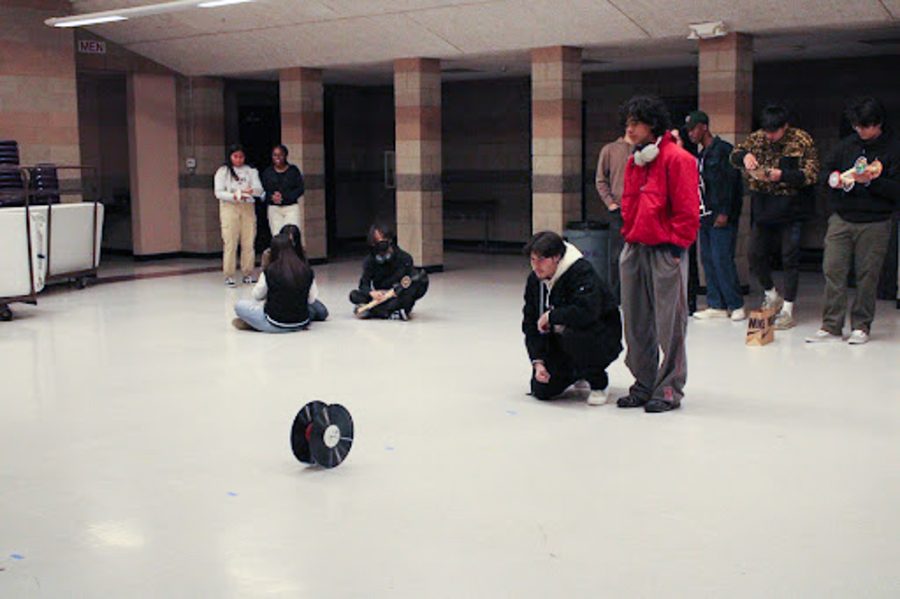AP Physics students get caught up with mousetrap cars
Juniors Matthew Lindensmith and Bodhi Beam test their mousetrap car in the MPR on Wednesday, Feb. 16.
AP Physics students participated in their end-of-unit project, the creation, and demonstration of mousetrap cars. On Thursday, Feb. 16, they gathered in the MPR to test how far their cars would go. Ms. Karen Gerdes, the AP Physics teacher graded her students based on the distance the students’ cars traveled.
AP Physics students received their project five weeks prior to the due date. Each day was dedicated to the trial and error of putting materials together and using physics to test the cars. The students would try different methods and would learn from their mistakes.
“The students were given the outline for the project about five weeks ago. They had different examples they could look at,” Gerdes said. “Over the five weeks, they had opportunities to build, try out different ideas, and modify them, after school, in the evening, or on a few Saturday work days.”
Though this task may seem simply like a project, it teaches the students that physics is not just to be learned about. It is something that affects our everyday lives and something we constantly deal with. While building the mousetrap car, students must learn to work with physics to have the car roll forward.
“Students are learning how to work collaboratively, plan and build a project, and see how physics is found outside of the classroom,” Gerdes said.
This end-of-unit project reviews all of the things that the students have learned within this unit.
Junior Matthew Lindesmith shared that he learned a lot from the project. He said he learned about the conversion of two types of energy and how the spring, arm, and wheels all have a big impact on each other.
“The reason why we are doing this is essential because it’s the end of the unit project. We see the ways potential energy turns into kinetic energy,” Lindensmith said.
Lindensmith, despite working with his partner junior Bodhi Beam, said that building this car was no easy accomplishment. He also said that there was a lesson behind it.
“Designing a mousetrap car teaches a person adversity. There are various steps in the process that we were able to overcome despite messing up with certain design aspects,” Lindensmith said.
When it came down to the time when the students were tested, most passed the five meters easily. When it was Lindensmith and Beam’s turn, their mousetrap car went 12 meters, which was the furthest any car had gone that class period.
“My favorite part was picking out the materials. It was fun designing what the car looked like,” Lindesmith said.
According to AP Physics students, the mousetrap car project was a success, teaching the students all about the conversion of two types of energy.

Isabella Moran is a senior at RCHS, and this is her second year in journalism. She is the assistant-editor-in-chief of the school newspaper, The Cat’s...






